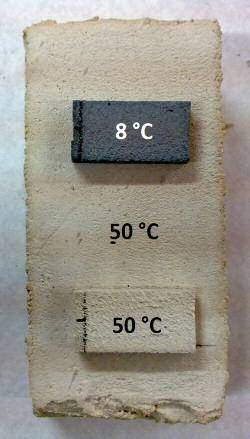Optical properties changing with temperature The surface temperature in materials exposed to solar radiation depends on their optical response, increasing for higher absorption of radiation. The optical properties of thermochromic materials change according to temperature. This fact makes them interesting, from an energetic point of view, for building coating since they grant a dark-coloured opaque material (heat absorption) in winter-time and a light-coloured (solar radiation reflection) in summer-time. The developed technology is a mortar coating with reversible thermochromic properties, based on a light-coloured cement that may be a conventional white Portland cement. However, an alternative proposal is an eco-efficient cement manufactured by hydrothermal synthesis from residues (flying ashes from thermal power plants). In order to achieve its thermochromic functionality, microencapsulated organic pigments are added to the mortar. These substances change colour from dark to light when they are heated over their activation temperature and they recover their original tone when cooled.
Mortar coating appearance at different temperatures (black pigment with transition at 31ºC ).
Main innovations and advantages
· Thermochromic façade finish without an additional paint layer.
· Use of solar energy to reduce energy demand in buildings.






